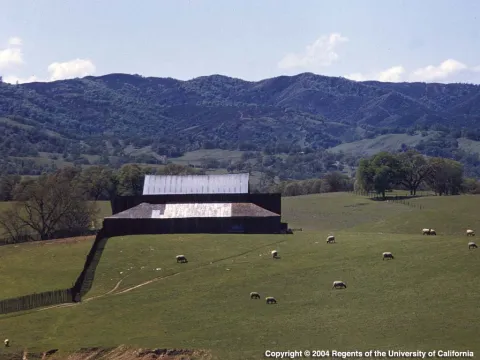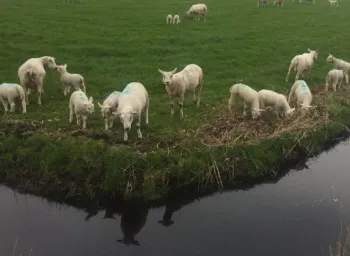Sheep Nutrition and Performance
Sheep Nutrition 101

Sheep, cows, and goats are domesticated ruminants. Ruminants are unique set of mammals who possess the ability to upcycle low quality forage into high quality meat, milk, and fiber. Their ability to efficiently digest forage is possible due to their four-chamber stomach. The largest of the four chambers is known as the rumen. Within the rumen are billions of bacteria, protazoa, and fungi that synergistically break down fiber and other nutrients enabling the ruminant to obtain both energy and protein from their food sources. Maintaining rumen health and productivity is essential for sheep health and performance. For information regarding rumen health and the specific nutrient needs for sheep at all stages of production see the nutrition fact sheets below
If you are a visual learner and would like to know about sheep nutrition watch the informative University of Nebraska Extension youtube video.
Rangeland and Irrigated Pasture Management

Rangeland forage quality (i.e. protein, energy, and mineral content) can vary tremendously depending on soil composition, location of range, and time of year. Generally, in California’s Mediterranean climate rainfall occurs during the winter with forage quality highest in the late winter/ early spring. For producers on rangeland matching the nutrients supplied by the rangeland to the nutrient demands of the animal is critical for animal health and performance. For resources on managing livestock grazing see below.
To ensure that your rangeland or pastureland is meeting your animals nutritional requirements you can get your forage tested at facility. For a list of California labs certified by the National Forage Testing Association click here.
For informative videos on rangeland and pastureland management visit the UCANR Ranching in the Sierra Foothills Youtube channel.
Water Quantity and Quality

Water is a vital nutrient, yet it is often overlooked. On average, dry ewes will require a gallon of water a day, wet ewes will require at minimum 1.5 gallons a day and finishing lambs will require at 0.5-0.8 gallons of water a day. In hot and humid environments these water requirements increase substantially. Limitation of water intake reduces animal performance quicker and more dramatically than any other nutrient deficiency. Therefore, ensuring that cattle are receiving enough water is essential for maintaining the health and vitality for any beef operation.
When water quality is compromised animals could drink less water, thus negatively affecting their health and performance. Substances that can contaminate water supplies include, but are not limited to, nitrates, bacteria, organic materials, and suspended solids. These contaminations can cause the water to have an objectionable taste, odor, or color. To learn more about water quality and how to help ensure water quality on your operation see the water quality fact sheets below.
For California water quality testing see links below.
